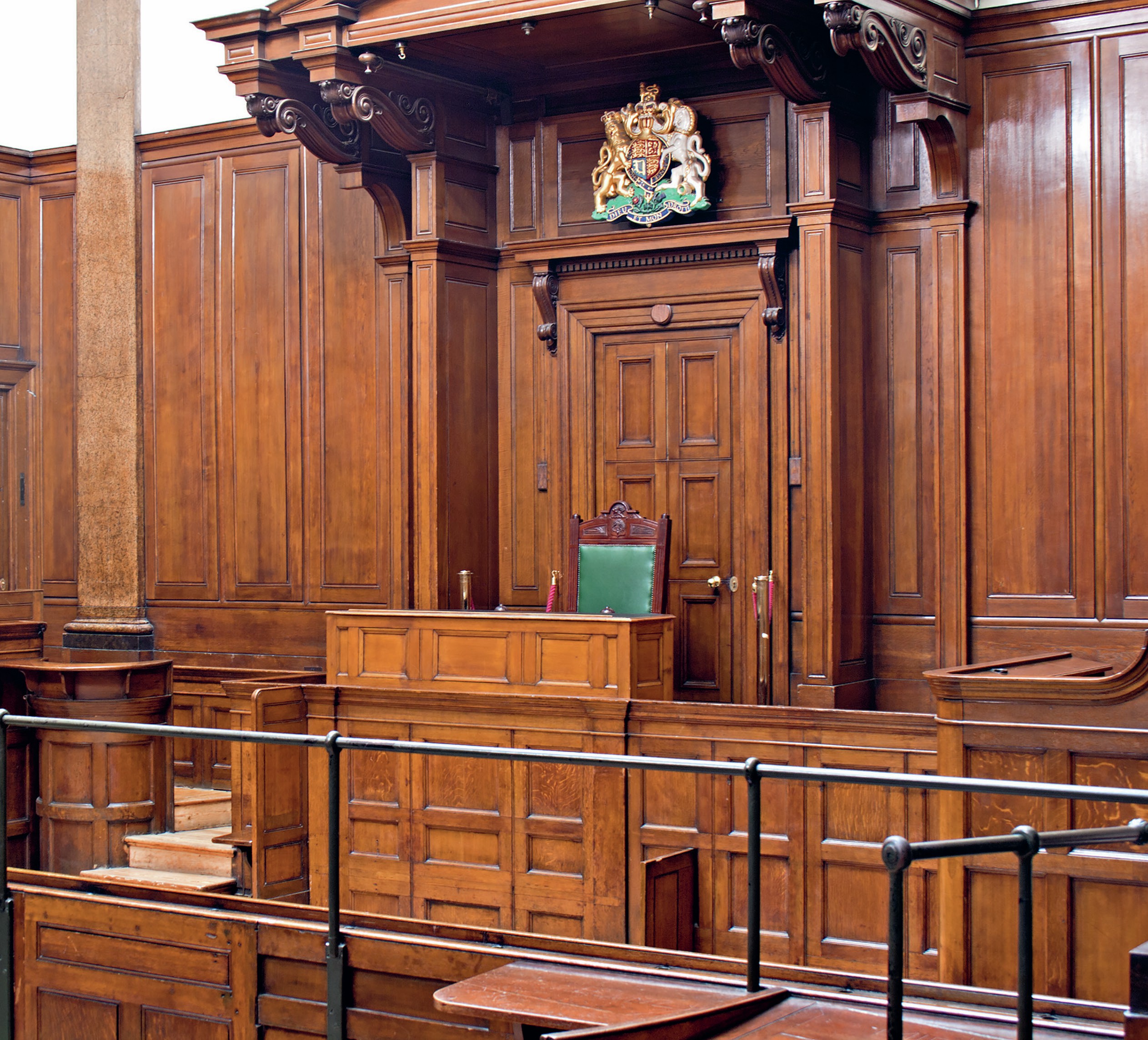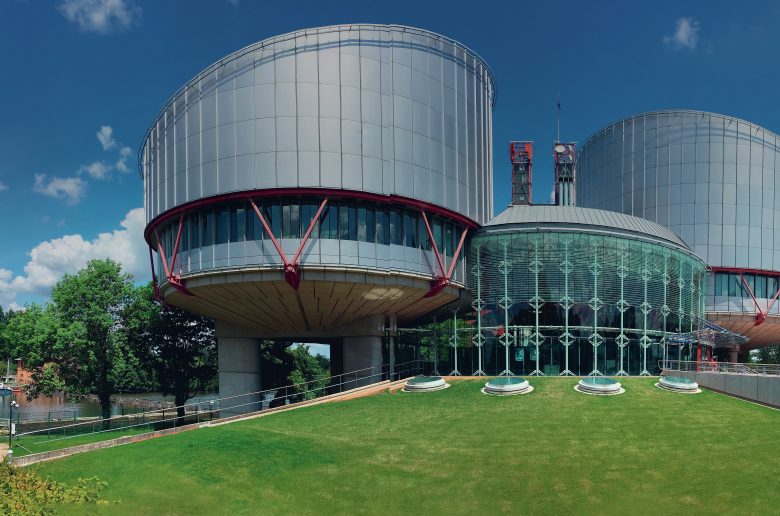Justice and the law
Exploring perspectives on the concept of justice and its application in the English legal system

EXAM FOCUS
This article is relevant to AQA Papers 1 and 3 and OCR Component 3.
What is justice? It is a difficult concept to define as people have different perspectives on what constitutes justice. The interpretation of the term therefore depends on a value judgment. While one of the fundamental principles of law is that justice should be achieved, whether it has or not comes down to individual opinion.
A simple interpretation of the word justice is ‘fairness’. The law should be fair in how it treats all members of society in a democracy. It should apply equally to everyone, irrespective of their status or wealth.
There are many theories and perspectives on justice. The philosopher Chaïm Perelman stated that justice requires ‘the equal treatment of beings who are essentially alike’. In common with other theorists, he saw equality as being at the heart of justice, but that did not necessarily mean that justice required all people to be treated in the same way.
Theories of justice
Natural law theory
Natural law theorists believe that the rules of right and wrong are inherent in people and are not created by societal norms or judges. The Greek philosopher Aristotle argued that a just state will distribute its wealth on the basis of merit, giving to each according to their virtue and their contribution to society. He believed that the people who are the worthiest or most deserving should receive the greatest share of resources. He thought that it would be unfair to allocate resources on the basis of people’s needs, as it would reward the lazy as much as the hard-working.
You could consider how this would apply in today’s society with a welfare state that pays for healthcare and care for the elderly, as well as legal aid for those on low incomes.
Positivist theory
Positivist theory is a view that law is a social construction and that rules or laws are valid because they are enacted by legitimate authority and are accepted by society. Thomas Hobbes argued that ‘it is improbable for any statute to be unjust.’ Statutes (Acts of Parliament) are democratic because they are made by an elected parliament and can be seen as just because the law is made by a sovereign body and goes through many checks and debates before being enacted.
However, many statutes are outdated, for example the Offences Against the Person Act 1861. When the law was written, bodily harm was understood to mean physical harm, but the law now recognises that it can include psychiatric harm. Judges have interpreted the law to fit with contemporary conditions in modern society but it could be argued that outdated laws should be amended by Parliament rather than leaving judges to make sense of them.
Another criticism of positivist theory is that unjust laws are considered valid simply because they have been made according to the established legislative process, regardless of their content. This was an issue raised in the famous Hart-Fuller debate over the validity of unjust Nazi laws. Fuller took a natural law perspective, whereas Hart argued a positivist viewpoint on the issue.
Utilitarian theory
Jeremy Bentham developed a theory of utilitarianism according to which the more an action increases overall happiness, the more valuable it is. This theory sees maximising happiness in society as the main objective when trying to achieve justice. However, this theory could be seen as unjust if the overall happiness of society takes priority over that of the individual.
Procedural justice
In any legal system, there are two important forms of justice: procedural and substantive justice. Procedural justice (sometimes referred to as formal justice) means that procedures and systems are put in place to ensure that justice is achieved. There should be a legal framework in place so that all members of society are equal before the law. If these procedures are in place and are used effectively then there is said to be procedural justice. In the UK, there are many legal institutions, such as the police, courts, judiciary, juries and appeals systems, that provide a structure in which justice can be achieved.
Procedural justice can also be seen in rules securing the right to a fair trial and the rule relating to trial by jury. At the heart of the criminal trial is the presumption of innocence, which acts to protect defendants and places the burden on the prosecution to establish the case beyond reasonable doubt. Juries are randomly selected members of the public who, to ensure a fair trial, have no link to or personal knowledge of anyone involved in the case.
However, there are criticisms of the jury system, such as the fact that a jury may be influenced by media pressure and make perverse decisions that go against the law. If a jury reaches a verdict based on bias, then justice has not been achieved.
Procedural injustice and Stephen Lawrence
In 1993, Stephen Lawrence was stabbed to death in a racially motivated attack in London. The subsequent police investigation led to an inquiry and the McPherson Report being published. In this report, it was found that the family of Stephen Lawrence did not achieve justice due to police failures during the investigation. It was not until 2012 that two of the five suspects were convicted of murder. The report was critical of how the Metropolitan Police investigated the murder, stating that they were ‘institutionally racist’.
Substantive justice
Substantive justice refers to the fairness of the law itself and its outcomes, rather than the processes and systems that surround it. You could look at any area of law (contract law, tort law, criminal law or human rights) and explore whether a specific law achieves substantive justice.
Criminal law
In criminal law, it could be argued that strict liability offences do not achieve justice (see pp. 16–17). A strict liability offence is one where the defendant can be found guilty if they commit the actus reus of the offence without proof of mens rea. Examples include many road traffic offences such as speeding, the sale of cigarettes and alcohol to minors, and pollution offences. The danger with such offences is that the defendant could be liable even when they are not at fault, as seen in the case of Harrow London Borough Council v Shah (1999) where a lottery ticket was sold to someone who looked 16 but was underaged.
Criminal law provides defendants with a range of possible defences. It recognises the fact that a person may not always be at fault. The Coroners and Justice Act 2009 created a defence of loss of control for the crime of murder. This is a partial defence which, if successful, reduces murder to manslaughter. The defence recognises that a defendant may have been so angry and distressed that their actions resulted in murder. While the defendant may not be fully to blame, is it morally right and just that we allow a defence to someone who cannot exercise self-control? It could be seen to reduce the seriousness of a killing and therefore create injustice for the victim’s family.

Law of tort
In the law of tort, Rylands v Fletcher (1868) has been considered a strict liability tort, meaning that the defendant is liable even if they did not know the danger. This can be seen as unfair on a defendant who is taking all reasonable care to prevent a danger. However, the result of Cambridge Water v Eastern Counties Leather (1992) means that defendants will only be liable where the damage is reasonably foreseeable. The potential unfairness to the defendant is further reduced by the availability of defences, such as an act of God.
Distributive justice
Many theorists have written about the concept of distributive justice, which means that the law should provide justice for all. In other words, justice should be distributed equally, regardless of class, age, gender and race.
Karl Marx believed that in a capitalist society, all laws are unjust. He argued that the law was used to protect and benefit the ruling class rather than the interest of all people in society. Marx believed that justice could be achieved with the redistribution of wealth from the rich (the bourgeoisie) to the working class (the proletariat). There are many examples that support Marx’s theory that law perpetuates inequality. One example is access to justice and legal representation. The wealthy in society are able to pay for the fees of a more senior and experienced lawyer (solicitor or barrister) to advise and represent them.
However, in order to achieve justice, there should be ‘equality of arms’ within the law, meaning that parties should be on an equal footing. It is difficult to see how this could occur in a case where an individual is involved with larger organisations or businesses. A claimant suing for negligence is unlikely to be able to afford the same level of legal counsel as a large corporation. Therefore, the parties are not on an equal footing from the start. An example of this imbalance can be seen in the ‘McLibel’ case (Steel and Morris v UK, 2001).
Justice can be achieved by the duty solicitor scheme in England and Wales, which allows anyone who is arrested to have access to a solicitor at the police station for free. This ensures that a suspect has legal advice before and during police questioning. This right has been reduced in recent years, as many duty solicitors provide advice over the telephone as opposed to in person.
Distributive justice is often not achieved for people from minority ethnic backgrounds. This is supported by data on stop-and-search powers, which show that a person is nine times more likely to be stopped and searched if they are black. We have already discussed the killing of Stephen Lawrence and the failures in the murder investigation, but this highlights the fact that there is inequality and injustice in the criminal justice system. It could be argued that a predominantly white judiciary lacks the diversity needed to address the issue of racial inequality.
Corrective justice
Corrective justice focuses on the law providing a fair remedy. In criminal law, this is achieved through sentencing, whereas in civil law, this is achieved by paying the claimant damages or awarding some other remedy.

Criminal law
In criminal law, the most dangerous offenders receive a custodial sentence. If someone is convicted of murder, they must receive a life sentence in order to protect society. Life imprisonment sends out a deterrent message that murderers will face severe punishment, and it also provides justice to the victim’s family, who will know that the offender is being punished.
Corrective justice is undermined if the offender reoffends or does not serve a fair prison sentence. Current reoffending rates for those released from prison are high, which implies that an offender’s behaviour will not change if they do not serve a fair sentence. Prison is also expensive and on average costs the state £40,000 a year for an adult offender. The UK has one of the highest prison populations in Europe, which could mean that offenders are kept in prison for an unjust length of time.
EXAM TIP
When writing an essay on law and justice, you can use any examples of justice or injustice that you have studied during your course. There are many examples you can draw upon from the English legal system, as well as areas of criminal, tort, contract and human rights law. You will need to discuss the extent to which they achieve justice.
EXAM TIP
Discuss at least two theories and theorists. There is no need to discuss all of the theories of justice in great detail.
Civil law
In civil law, the award of damages is a key remedy. The financial compensation is a recognition of the harm and injury the defendant has caused and is a form of corrective justice, as it provides a remedy to the claimant. This is problematic however, as there is no legal aid available for most claims in tort law, and claims for damages are generally brought using a ‘no win, no fee’ agreement. These agreements can be seen as unjust, as solicitors will take a percentage of any damages awarded and usually only take cases that they are likely to win, which is a disadvantage to those unable to pay for their own legal representation. Further injustice may be caused if a person is awarded damages by the court but the defendant has no funds to pay those damages.
KEY POINTS
There are different theories and perspectives on justice:
■ Substantive justice refers to the content of the law and its outcomes.
■ Procedural justice refers to the processes and systems that accompany the law and legal system.
■ Utilitarian theory measures justice in terms of whether something maximises the happiness of the greatest number of people.
■ Distributive justice considers whether benefits and rewards are distributed fairly across society.
■ Corrective justice is concerned with addressing unfairness e.g. through sentencing in criminal law or the award of a remedy in civil law.

PRACTICE EXAM QUESTIONS
English legal system and criminal law
Use these questions to help you prepare for AQA Paper 1
1 In criminal law, which one of the following elements is not part of the gross negligence manslaughter offence?
a Duty of care
b Breach of the duty of care
c The Church test for dangerous acts
d The risk-of-death objective test
2 In criminal law, which one of the following statements about attempts is false?
a A defendant’s belief that they are engaged in a criminal offence will not support liability for an attempt of an offence that is factually or legally impossible to commit.
b A defendant’s belief that they are engaged in a criminal offence will support liability for an attempt of an offence that is factually or legally impossible to commit.
c Attempting to commit an offence that is factually or legally impossible is recognised by s.1(2) and s.1(3) of the Criminal Attempts Act 1981.
d The case of Rv Shivpuri (1986) illustrates the importance of belief for establishing an attempt to commit an offence that is factually or legally impossible under s.1(3) of the Criminal Attempts Act 1981.
3 In criminal law, which one of the following elements is not part of the actus reus of the offence of murder?
a The killing takes place under the king or queen’s peace.
b The victim is a ‘reasonable creature in being’.
c The killing is unlawful.
d The victim must die within a year and a day of the commission of the offence.
4 In criminal law, which of the following options is not an element of the partial defence to murder of loss of control?
a The qualifying triggers of fear of violence and/or things said and done.
b The defendant experiencing a total loss of self-control.
c The defendant experiencing a sudden and total loss of self-control.
d An objective test to see if ‘a person of the defendant’s sex and age, with a normal degree of tolerance and selfrestraint and in the circumstances of the defendant, might have reacted in the same or similar way to the defendant’.
5 In the criminal courts, which one of the following judges will not sit in the Crown Court to hear indictable cases?
a District judge
b Circuit judge
c Recorder
d High Court judge
LawReviewExtras
Check your answers at www.hoddereducation.co.uk/lawreviewextras





